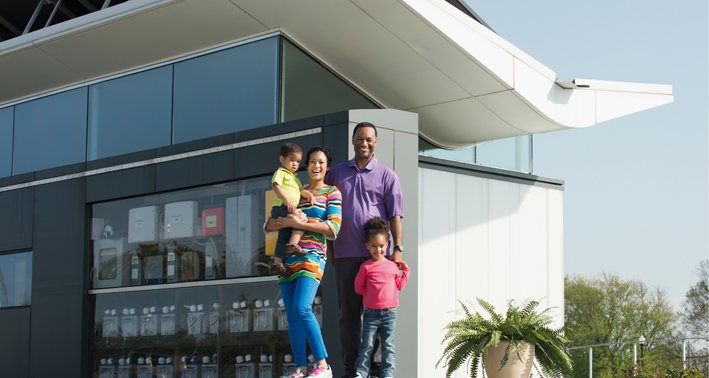Smart Leasing

More and more Americans are using photovoltaics to become independent from rising electricity prices. However, most of them are no longer purchasing their PV systems; instead, they are choosing a complete solar service package, an option that is also referred to as solar leasing. Leasing instead of buying – a business model, which established itself in the automobile industry years ago, could also become a worldwide model for success in the solar sector. An interview with Edward Fenster, one of the founders and CEO of Sunrun, and Bates Marshall, vice president of medium power solutions at SMA America.
Mr. Fenster, it is common to lease cars in Germany, however, the model is still very new for PV systems. How has it developed in the U.S.?
Edward Fenster: Very successfully. We introduced the model in the U.S. in 2007 – and since then third-party ownership of PV systems has far surpassed purchasing and private ownership. Industry experts estimate that last year up to 70 to 80 percent of all newly installed residential PV systems in the U.S. were financed this way.
Why should homeowners lease a PV system instead of buying one?
Edward Fenster: The answer is simple. Because we take care of everything. Many homeowners want to become more independent from rising energy costs in the long term and would like to produce clean, affordable solar power themselves. However, a lot of the time homeowners are scared off by perceived complications such as the costs of a PV system, the bureaucracy of dealing with regulating authorities and power companies, or uncertainty about what to do in the event of a system failure. If they lease a PV system, they don’t have to worry about any of these things.
How does solar leasing work on a day-to-day basis?
Edward Fenster: When potential customers call us up, we first make sure that their roof is appropriate for cost-efficient PV system operation. We can assess this within a couple of minutes. If the result is positive, an installer from one of our partner companies will plan the installation for the customer on location. We review the plans to make sure that everything is drawn up correctly and then commission construction. We subsequently make sure, along with our partners, that the installation delivers the guaranteed yields for the entire period of the leasing contract of 20 years. That means that we organize the ongoing monitoring and maintenance of PV system for our customers. In return, customers pay us a fixed monthly rate – which, as opposed to energy bills from conventional suppliers, is fixed from the outset and remains the same for the entire length of the contract. Customers can also check up on their PV system yields at any time online.
Bates Marshall: Nothing actually changes in the everyday lives of our customers – apart from the fact that they now have clean electricity from their own roof at a long-term attractive price. This is not only good for their conscience, but also for their wallets. With this model, homeowners can save on electricity costs for years.
Are you planning on working together to develop further leasing offers for homeowners and investors?
Edward Fenster: I can imagine integrating battery banks into our offer in the long term once costs have gone down and the technology has matured.
Bates Marshall: I would take it one step further and integrate the entire SMA Smart Home System with the Sunny Home Manager and storage system solution into the offer. This way homeowners would be able to use their self-produced solar energy more efficiently at only a slightly higher leasing rate − without any loss of convenience.
Edward Fenster: Yes, we should consider that. In the past, even just the idea of energy efficiency has been a hard one to get across in the U.S. We have, however, been able to prove to our customers that we can find ways for them to save money without affecting their quality of life. The key aim here is to offer failure-free protection against ever more frequent power outages without any compromises in terms of convenience, as well as further reductions in electricity costs. I can well imagine that there is an appropriate level of interest for this type of technology.
The solar leasing model has established itself in the U.S. in only a few years. How does the situation look in other countries? Will solar leasing also be successful in other places?
Edward Fenster: We certainly have the impression that in markets where feed-in compensation is sinking more and more radically, there is a trend towards the third-party ownership model. For example, we have already received calls from Germany.
Bates Marshall: What is clear is that the price of conventionally produced electricity is going up globally while the cost of photovoltaics continues to go down. It is thus becoming more and more attractive to produce and consume solar electricity yourself. Against this backdrop, I can see great potential for the solar leasing model in Europe. But also in the emerging markets in Asia and Latin America, where there is still no reliable power supply but where there are high rates of solar irradiation and a growing energy demand, solar leasing will surely become an increasingly appealing option.
Mr. Fenster, Mr. Marshall, thank you very much for the interview.

Feel free to contribute!